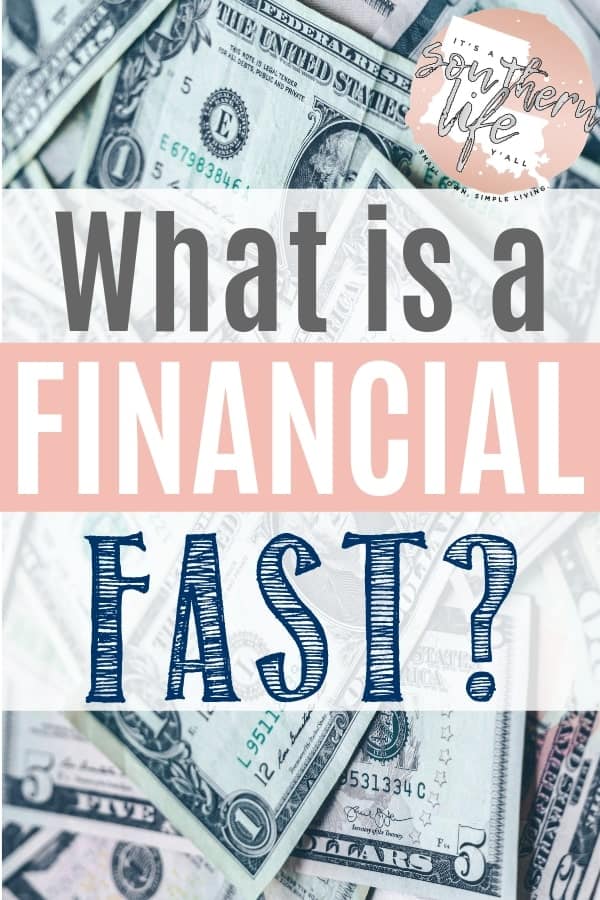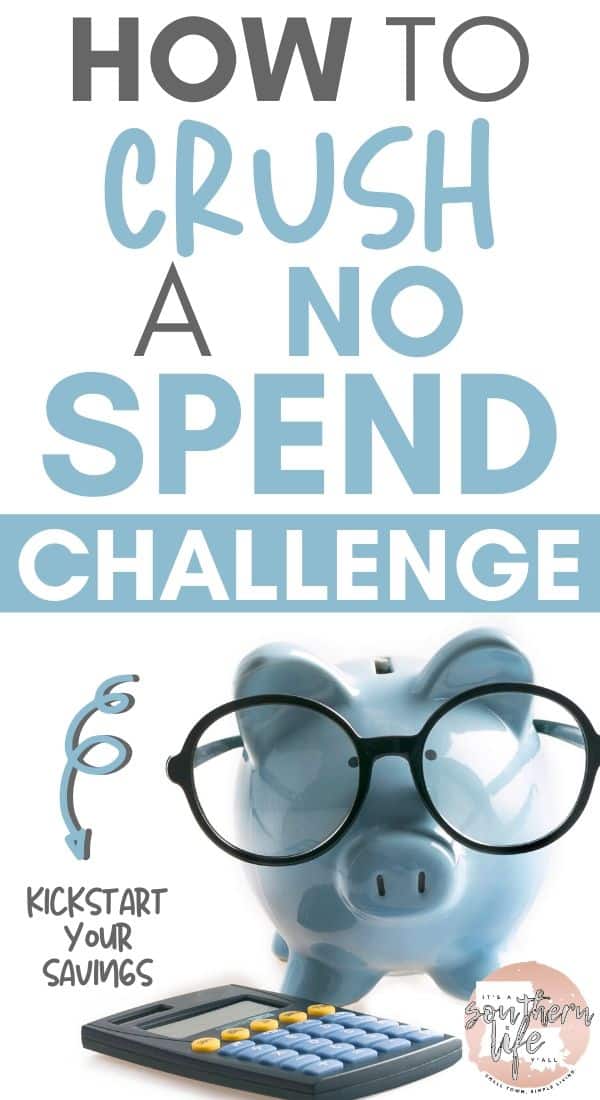I can’t scroll through Pinterest without seeing pins about financial fasting and no-spend challenges and how these can save you money. Of course, my interest is piqued by these terms because I’m nerdy that way and am always looking for new ways to save money. So the question is: What is a Financial Fast and how can it help us save money?

(This post may contain affiliate links. What does that mean to you? Well, if you click on a product and make a purchase, I may receive some compensation at NO charge to you. If you want to read the boring stuff from my full disclosure can be found here.)
What is a Financial Fast?
A financial fast is not a new concept and actually is something I have used often through my years of financial woe without the label.
Basically, a financial fast is a period of time you choose to go without spending on anything other than necessities. The time length is up to you.
You know, take a step back in time and behave more like your grandparents. Instead of grabbing things on the go, make it at home! Stop using disposable plates and actually wash dishes! Make your lunch at home or use leftovers instead of grabbing something on the road.
Financial fasting helps you to re-evaluate your spending habits — pushes you to use frugal living tips.
How to Start?
You can find plenty of no spend challenges on Pinterest or you can create one tailored just for you. But all follow the same basic guidelines:
- Reduce Spending. The objective with a financial fast is to become more aware of unnecessary spending and reduce it! Learning how to control your spending is an important step when trying to achieve financial peace of mind.
- Define Spending. A financial fast is not a cut of ALL spending. It is a cut off unnecessary spending — like cutting out your $6 a day coffee habit and making a to-go mug at home. By the way, if you cut this habit out just 20 days per month, you could save nearly $1500 a year. WHOA! During your financial fast, you will distinguish between wants and needs.
- Cash is the way to go. Implementing a cash-only system during your financial fasting period will help you cut impulsive spending. If you rely on only using cash, you will have the mentality of when it’s gone, it’s gone. You will become more aware of your spending. Want to know more about a Cash Envelope Budget System? Read my post HERE!
Plan Your Way to Success
Without proper planning, you are setting yourself up for a no spending failure. Don’t just jump into a no-spend challenge, assess your spending and create budgets prior to starting this money-saving technique.
Defining your wants and your needs will take you a long way.
Financial Fasting Tips:
- Never shop without a list. Start out by assessing what you already have and what you need during your fast time.
- Plan your meals. Meal planning not only helps in saving time but also helps with impulsive overspending at the grocery store. I love using the meal planning service to help me find a variety of meal ideas along with shopping lists to make cutting my spending a breeze. Eat At Home also saves me time…and we all need that!
- Have snacks and treats on hand so you don’t feel the need to pick something up.
- Leave your plastic at home. It is a proven fact that you are less likely to give in to temptation spending if you only have cash on you.
- Share what you are doing with your friends. This will not only stop them from suggesting meeting up for coffee but a few may join in on the no spend challenge with you.
- Try for a smaller amount of time before you have a no spending month.
A financial fast is a great way to become more aware of your unnecessary spending. Small changes are great and lasting ways to take control of your finances.
Let me know about your financial fasting in the comments below!





Leave a Reply